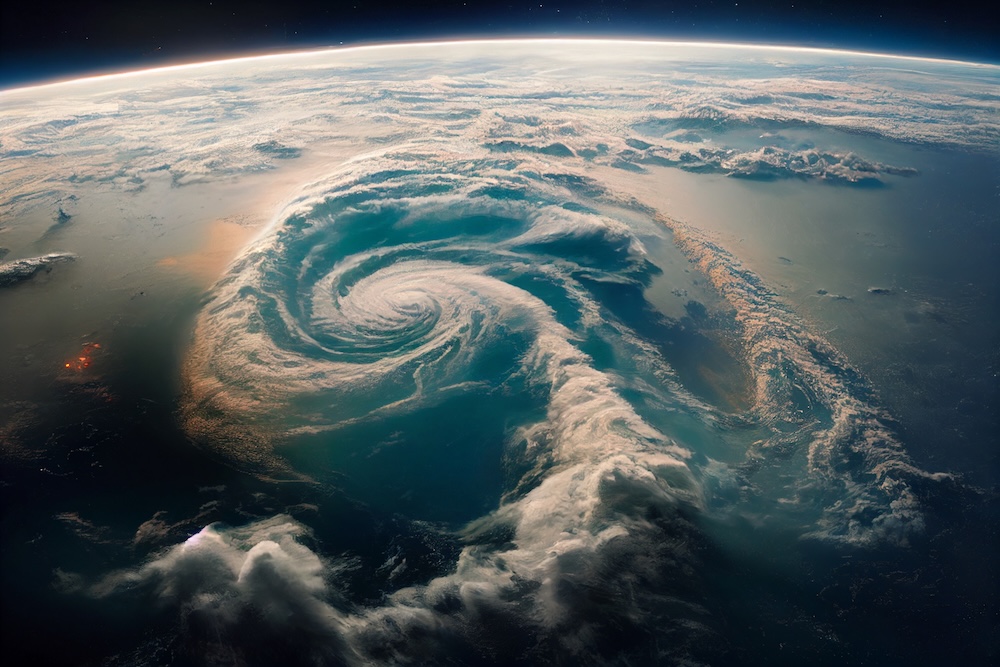How global warming is making extreme weather stronger, stranger, and more destructive
Storms have always been part of life on Earth — but now they’re different. Bigger. Slower. Hotter. Wetter. And far more dangerous.
As the planet warms, we’re seeing a rise not just in temperature, but in storm intensity, frequency, and unpredictability. Climate change isn’t just nudging storms — it’s supercharging them.
Here are 9 types of storms that are being fueled or intensified by the climate crisis — and what that means for the future.
1. Tropical Cyclones and Hurricanes
These massive storms feed on warm ocean water — and oceans are heating fast. The result? Stronger hurricanes and typhoons, with higher wind speeds, more rain, and greater storm surge.
Recent years have seen a surge in Category 4 and 5 storms. In 2025, parts of the Pacific and Atlantic basins experienced record-breaking sea surface temperatures, creating conditions for unusually intense cyclones and extended hurricane seasons.
2. Atmospheric Rivers
These are long bands of moisture that can drop incredible amounts of rain or snow in a short time. Warming air holds more moisture, making atmospheric rivers wider, wetter, and more destructive.
The U.S. West Coast has been hit hard in recent years, with atmospheric rivers causing landslides, dam failures, and flood emergencies — especially in burn-scarred or mountainous terrain.
3. Heat Storms (aka Heatwaves)
Heatwaves are often treated as background events, but they are some of the deadliest climate-related disasters. They’re happening more frequently, lasting longer, and pushing temperatures to dangerous extremes — especially in urban areas with poor ventilation and limited shade.
The 2025 heatwaves across Southern Europe, North Africa, and the U.S. Southwest have shattered temperature records and caused thousands of heat-related hospitalizations.
4. Thunderstorms and Hailstorms
A warmer atmosphere creates more instability, meaning more frequent and severe thunderstorms, with intense lightning, heavy rain, and larger hailstones.
In some parts of the world, including Central Asia and the U.S. Midwest, hailstorms are becoming more destructive to agriculture, vehicles, and homes.
5. Derechos and Supercell Storms
Derechos are long-lived wind storms tied to fast-moving thunderstorms, and supercells are rotating storm systems that often produce tornadoes.
With climate change, supercells may become more frequent in new regions, shifting tornado activity into places like the southeastern U.S. or even parts of Europe. Storms are also moving slower, increasing localized damage.
6. Ice Storms and Freezing Rain
Warming doesn’t mean winter storms go away — in some cases, it means more snow and ice, especially when warm air traps moisture over cold ground.
This leads to dangerous freezing rain and ice storms, which damage power lines, paralyze infrastructure, and increase accidents. These events are especially dangerous in regions not used to ice buildup.
7. Monsoon Surges
In places like India, Bangladesh, and Southeast Asia, monsoons are arriving less predictably and with more intensity. Climate change is disrupting the rhythm of monsoons, leading to cycles of drought and flood.
In 2025, devastating monsoon rains in South Asia displaced millions, collapsing hillside villages and overwhelming urban drainage systems.
8. Winter Storms with Extreme Snowfall
Warmer air holds more moisture — so when temperatures hover near freezing, it can result in huge snow dumps. Cities that aren’t prepared for heavy snowfall, like some in the southern U.S. or western Europe, are now seeing snowstorms that shut down entire transportation systems.
In 2025, unexpected snowstorms in Japan and parts of Turkey blanketed regions with record-breaking snow, catching communities off guard.
9. Hybrid Storms
Some storms don’t even fit traditional categories anymore. As climate patterns destabilize, we’re seeing hybrid events — part hurricane, part nor’easter, part monsoon — making them harder to predict and prepare for.
In 2025, several such hybrid storms formed over unusual regions like the Mediterranean and South Atlantic, showcasing how climate change is reshaping global weather systems.
Final Thoughts: The Storm Has Changed
What makes all of these storms more dangerous today isn’t just their power — it’s the fact that we’re not ready for what they’ve become.
Storms are now:
- Slower-moving, so they drop more rain
- More widespread, reaching new areas
- Less seasonal, arriving when we don’t expect them
- More intense, with less time to prepare
This isn’t the climate we grew up with — and it’s not going back to “normal.”
But with awareness, preparation, and smarter planning, we can adapt to the new weather reality — and stop calling every storm a surprise.









Reader Interactions